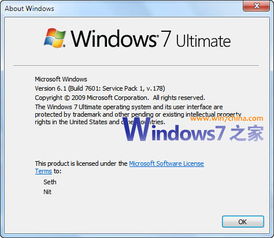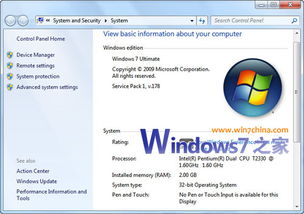windows英文,Introduction to Microsoft Windows
Windows 是微软公司开发的一款操作体系,其名称是英文。它首要使用于个人电脑、服务器、嵌入式体系等设备。Windows 操作体系供给了用户友爱的图形用户界面,支撑多任务处理、网络通信、文件办理等多种功用。Windows 系列包含 Windows 10、Windows 8、Windows 7 等版别。
Introduction to Microsoft Windows

Microsoft Windows, often simply referred to as Windows, is a series of graphical operating systems developed, marketed, and sold by Microsoft. It has become one of the most widely used operating systems in the world, powering millions of personal computers, laptops, and servers. This article aims to provide an overview of the Windows operating system, its history, features, and its impact on the computing world.
History of Windows

Microsoft Windows was first introduced in 1985 as a graphical operating system for MS-DOS users. The initial version, Windows 1.0, was a simple program that provided a graphical user interface (GUI) on top of MS-DOS. Over the years, Windows has evolved significantly, with major versions such as Windows 3.x, Windows 95, Windows XP, Windows 7, Windows 8, Windows 10, and the latest Windows 11. Each version brought new features, improved performance, and enhanced user experience.
Key Features of Windows

Windows operating systems are known for their user-friendly interface, robust security features, and wide range of applications. Some of the key features of Windows include:
Graphical User Interface (GUI): Windows provides a visually appealing and intuitive GUI that allows users to interact with their computers using a mouse and keyboard.
Taskbar and Start Menu: The taskbar provides quick access to frequently used applications, while the Start menu allows users to launch programs, access settings, and manage files.
File Explorer: Windows includes a file explorer that allows users to navigate, organize, and manage files and folders on their computer.
Windows Defender: Windows comes with built-in antivirus and anti-malware protection to help keep your computer safe from threats.
Windows Store: The Windows Store provides a centralized location for users to download and install applications, games, and other content.
Windows Versions and Editions
Microsoft has released several versions of Windows, each with different features and target audiences. Some of the most notable versions include:
Windows 95: This was the first version of Windows to include the Start button and taskbar, making it easier for users to navigate their computers.
Windows XP: Known for its stability and reliability, Windows XP was one of the most popular versions of Windows, with a long lifespan.
Windows 7: Windows 7 introduced several new features, such as the Aero interface, improved taskbar, and enhanced performance.
Windows 8: This version of Windows introduced a new Start screen and a more touch-friendly interface, although it faced criticism for its lack of a traditional Start menu.
Windows 10: Windows 10 brought back the Start menu, improved performance, and introduced several new features, such as the Edge web browser and Cortana virtual assistant.
Windows 11: The latest version of Windows, Windows 11, focuses on a fresh, modern look and improved performance, with features like Snap Layouts and Teams integration.
Windows in the Enterprise
Windows has also become a staple in the enterprise environment, with many businesses relying on Windows for their servers and desktop computers. Windows Server editions provide robust server capabilities, including file and print services, web hosting, and remote access. Additionally, Windows Virtual Desktop allows organizations to deploy virtual desktops to their employees, ensuring secure access to corporate resources from anywhere.
Conclusion
Microsoft Windows has become an integral part of the computing world, providing users with a reliable, secure, and user-friendly operating system. With its continuous evolution and introduction of new features, Windows continues to be a popular choice for both personal and professional use. As technology advances, Windows will undoubtedly continue to play a significant role in shaping the future of computing.
Tags:
Microsoft Windows, operating system, GUI, history, features, versions, enterprise, virtual desktop
猜你喜欢
 操作系统
操作系统
macos软件,功用、优势与开发攻略
依据查找成果,我为你整理了一些在MacOS上值得引荐的软件。这些软件涵盖了多个类别,包含写作、规划、使命办理、体系东西等,希望能协助你在Mac上取得更好的运用体会。1.写作与笔记Bear:一款高雅且易上手的Markdown写作软件,支...
2025-01-22 0 操作系统
操作系统
linux互斥锁,什么是Linux互斥锁?
在Linux体系中,互斥锁(Mutex)是一种用于同步多个线程拜访共享资源的机制。当一个线程测验拜访一个被互斥锁维护的资源时,假如该互斥锁现已被其他线程持有,那么这个线程会被堵塞,直到该互斥锁被开释。在Linux中,互斥锁一般运用POSIX...
2025-01-22 0 操作系统
操作系统
linux显现行号,运用cat指令显现行号
1.运用`cat`指令和`n`选项:```bashcatnfilename```这会在每一行的前面增加行号。2.运用`nl`指令:```bashnlfilename````nl`指令...
2025-01-22 0 操作系统
操作系统
嵌入式体系与通用核算机的差异,比较嵌入式体系与通用核算机体系的差异
嵌入式体系与通用核算机的差异首要表现在以下几个方面:1.规划意图和用处:嵌入式体系一般是为了完结特定的使命而规划的,如轿车中的发动机操控体系、家用电器中的微波炉操控单元等。而通用核算机则是为了履行各种不同的使命而规划的,如个人电脑、服务器...
2025-01-22 0 操作系统
操作系统
linux网络衔接
1.检查网络接口状况:运用`ifconfig`或`ipaddr`指令检查网络接口的状况。运用`netstat`指令检查网络衔接的状况。2.装备网络接口:修改`/etc/network/interf...
2025-01-22 0 操作系统
操作系统
深圳嵌入式训练,敞开你的嵌入式技能之旅
1.信盈达电子有限公司特色:信盈达是一家有着10年前史的嵌入式训练组织,课程包含嵌入式训练、单片机训练、物联网训练、Linux训练等多个方向。信盈达还供给高端渠道CortexA9、Linux体系、Android训练等,可依据学员的...
2025-01-22 0 操作系统
操作系统
windows向linux传文件,Windows向Linux传文件的有用攻略
1.SFTP(SSH文件传输协议):如果您已经在Windows上装置了SSH客户端(如PuTTY),能够运用SFTP来传输文件。翻开PuTTY,输入Linux服务器的IP地址,挑选“SFTP”作为衔接类型,然后输入用户名和...
2025-01-22 0 操作系统
操作系统
linux解压tar包指令,tar指令简介
在Linux体系中,解压tar包的指令取决于tar包是否是紧缩的。假如tar包未紧缩,您能够运用以下指令来解压:```bashtarxvf文件名.tar```假如tar包是紧缩的,比方gzip、bzip2或xz紧缩,您需求运用不同的指令...
2025-01-22 0

